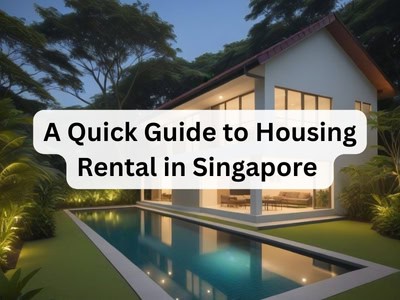This post is also available in:
![]() 简体中文 (Chinese (Simplified))
简体中文 (Chinese (Simplified))
A Quick Guide to Housing Rental in Singapore
 Expats intending to work and live in Singapore will need to focus on something else besides starting a business. Their housing and rental situation.
Expats intending to work and live in Singapore will need to focus on something else besides starting a business. Their housing and rental situation.
Renting a house or place to live can easily be done remotely, even before you arrive in Singapore. Property rental portals are aplenty and all you need to do is log in to one to peruse your options. Portals like Property Guru, Singapore Expats Forum, and SRX Property are some examples of popular housing portals. However, how do you narrow down which might be the best location for you to live?
Where to Live When You Arrive in Singapore
After applying to move to Singapore, getting your work pass is a very exciting feeling. Once you get your work pass in Singapore, there are various areas for you to consider living. These areas can be roughly classified into the following categories:
- The CBD area (Central Business District)
- Core Central District
- City Fringe
- North
- Northeast
- West
- East
When choosing your place to live, factors like rent, schools, transportation links, and work location are at the top of the list for consideration. Amenities are also something to consider, and a lot of expats look for community amenities like public swimming pools, libraries, shopping malls, and supermarkets. These factors will help them narrow down their housing and rental locations in Singapore.
Housing and Rental Options to Consider
You must first decide on the type of accommodation you want to rent. Most Singaporeans do not rent homes, preferring or being forced to live with their parents until they are ready to buy a home.
Here are some housing and rental options to consider when moving to Singapore:
- Renting A Room In A Condominium – The most common arrangement is to share an apartment with other tenants in a condominium development. Condominiums may include amenities such as swimming pools, gyms, tennis courts, barbeque pits, and 24-hour security. If you want to rent an entire condo, that’s possible too. Shoebox studio condominium units are the smallest and least expensive option for a rental home. If you’re moving to Singapore with your family, you might want to think about renting out an entire apartment or house. It is worth noting that houses or landed properties are more likely to be located far from MRT stations.
- Renting A Shared Room In A HDB Flat – This frequently (but not always) entails cohabiting with the landlord. Because HDB flats do not have amenities such as swimming pools or 24-hour security, renting a room in a HDB flat is your cheapest option. You could also opt to rent an entire HDB flat to yourself if you have the budget. This is the cheapest option if you require an entire unit to yourself. The smallest units are 2-room flexi flats (1-bedroom + living room), but these are scarce. The next cheapest option is a 3-room flat (2 bedrooms + living room).
When searching for a place to live, keep in mind that location, transportation, and proximity are also factors that could bump up the price of your rental. The maturity of the property could also be a factor too. When it comes to HDB property, flats in mature estates command higher rents. This is because they are typically located closer to the city core, have better-established amenities, aren’t a constant construction site, and have larger units. Non-mature estates in newer neighbourhoods tend to be in remote areas. These areas may have a lot of construction going on and lack amenities. This is something to keep in mind.
Although the whole process can be done remotely before visiting to Singapore, employers can also help you arrange your accommodation if you want to. Alternatively, you may search yourself at the properties portal and contact the property agent for assistance on housing rental in Singapore.



